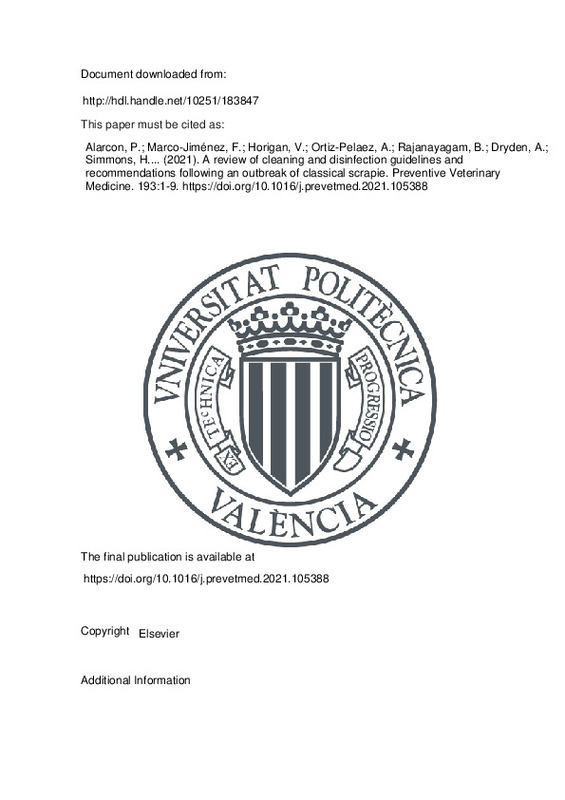JavaScript is disabled for your browser. Some features of this site may not work without it.
Buscar en RiuNet
Listar
Mi cuenta
Estadísticas
Ayuda RiuNet
Admin. UPV
A review of cleaning and disinfection guidelines and recommendations following an outbreak of classical scrapie
Mostrar el registro completo del ítem
Alarcon, P.; Marco-Jiménez, F.; Horigan, V.; Ortiz-Pelaez, A.; Rajanayagam, B.; Dryden, A.; Simmons, H.... (2021). A review of cleaning and disinfection guidelines and recommendations following an outbreak of classical scrapie. Preventive Veterinary Medicine. 193:1-9. https://doi.org/10.1016/j.prevetmed.2021.105388
Por favor, use este identificador para citar o enlazar este ítem: http://hdl.handle.net/10251/183847
Ficheros en el ítem
Metadatos del ítem
| Título: | A review of cleaning and disinfection guidelines and recommendations following an outbreak of classical scrapie | |
| Autor: | Alarcon, Pablo Horigan, Verity Ortiz-Pelaez, Angel Rajanayagam, Brenda Dryden, Aidan Simmons, Hugh Konold, Timm Marco, Carmen Charnley, Judith Spiropoulos, John Cassar, Claire Adkin, Amie | |
| Entidad UPV: |
|
|
| Fecha difusión: |
|
|
| Resumen: |
[EN] Classical scrapie is a prion disease of small ruminants, the infectious agent of which has been shown to be extremely persistent in the environment. Cleaning and disinfection (C&D) after a scrapie outbreak is currently ...[+]
|
|
| Palabras clave: |
|
|
| Derechos de uso: | Reconocimiento - No comercial - Sin obra derivada (by-nc-nd) | |
| Fuente: |
|
|
| DOI: |
|
|
| Editorial: |
|
|
| Versión del editor: | https://doi.org/10.1016/j.prevetmed.2021.105388 | |
| Código del Proyecto: |
|
|
| Agradecimientos: |
|
|
| Tipo: |
|







![[Cerrado]](/themes/UPV/images/candado.png)


